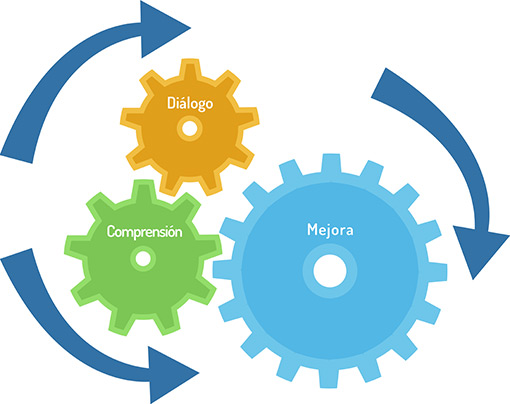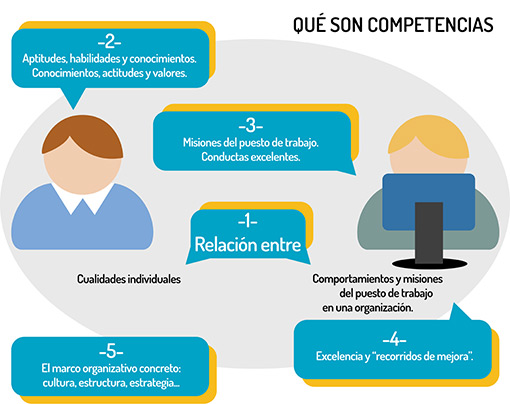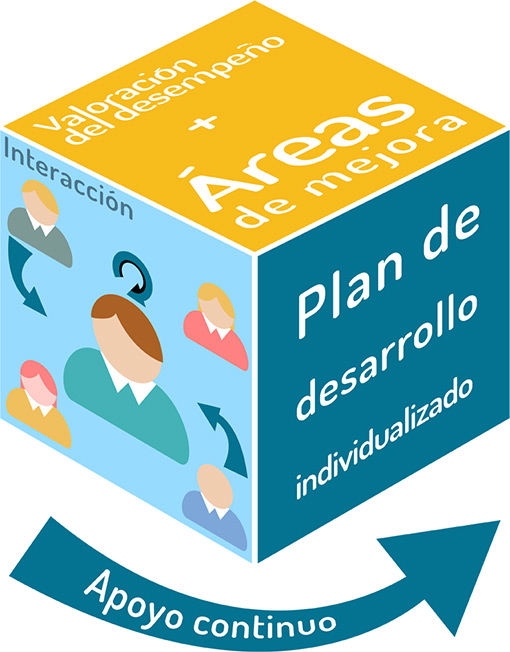
What is the model and why is it called that?
DCM corresponds to the initials of Diálogo, Comprensión and Mejora (Dialogue, Understanding and Improvement) in Spanish.
DCM is an analysis model based on competencies that help us identify where we are putting the focus of our behavior, both in our studies and our professional life… knowing that there are 3 main axes of our behavior: "our internal focus, the focus that is directed towards others and the focus that is directed towards context, to the outside…"
It allows us to realize the intensity with which we approach each focus… not to analyze to perpetuate… but analyze to be aware of where we are and help us move in the right direction …
The model is living and dynamic and establishes permanent bridges of Dialogue between the micro-reality of everyday living and the profile requirements of my job or education.

On the other hand, even though in reality as humans we are able to change things that we do not understand the essence of, this model opts for a detailed progress that deviates from a real and objective Understanding of what is happening in the day-to-day performance to which this model does not/should not detract from.
In addition, a performance management model has to help the person to actually “move” and therefore, beyond that dialogue and understanding, this model proposes to accompany the professional in a process focused on “providing steps”. In the everyday tasks that this model activates in people, sometimes these steps will be small like those of a baby, sometimes giant strides, but they will always be significant like a seed and the reality of a permanent attitude that the model seeks to instill in the people and in the organization: "continuous improvement is a possibility and a fact".

For the creators of the DCM system, university professors and researchers in the field of Industrial Psychology and Human Resources, bringing DCM to light means revealing the results of an empirical study conducted with the care of a craftsman and contrasted with countless professionals of various fields and sectors, over the course of more than 15 years of teaching, research and consulting.
As experts in analyzing human capital, for the implementation of this model based on competencies, we have borrowed from our lengthy experience with a focus on traits and created a permanent comparison of our results with the individual qualitative analysis of traits of the people that have benefitted from working with the DCM.

The comparison of our DCM model has allowed us to make adjustments over time, assuming that, as some authors say that share our focus: "The best way to know reality is to try to transform it.” We can say that we are indebted to the participative action research.
Of all the methods available to validate this work of qualitative nature, we highlight the following in order of importance:
Our objective is not to "label" reality or people… it is to help them move in the direction of improvement… and we have a long track record with this model.
We are not searching for the truth… we are searching for your truth here and now. We are searching for the place, like on a map in an unknown city, indicated with a sign and legend "you are here"… as a starting point to an exciting journey through new paths, yet to be discovered…
Basic bibliography:
DCM ® 2024, All rights reserved. Privacy policy